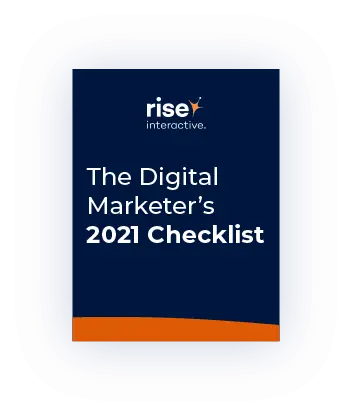What Will 2021 Bring Digital Marketers?
Get ready for a great year—we’re rooting for you!
Download a shareable checklist with all of these tips here.
Every year at this time, Rise publishes digital media predictions from our leaders to help prepare readers for the year ahead in marketing. In January 2020, we predicted advances in the cookieless world, cross-channel sophistication, and… definitely not a pandemic.
To continue publishing predictions feels comical, right? Hasn’t 2020 proved to us all that the right hook comes faster than we can catch?
Not quite. Many of the biggest shifts in our industry we’ve seen during the pandemic—digital storefronts, audience-first customer experience, pressure to justify media spend—were impending trends merely accelerated, not birthed, by 2020’s changing consumer behaviors.
Hence, we continue to publish our predictions. Whatever 2021 brings, and however quickly it arrives, here are the biggest trends hitting the marketing industry this year.
CUSTOMER EXPERIENCE
ANALYTICS & TECHNOLOGY
DIGITAL MEDIA
Download a shareable checklist with all of these tips here.


